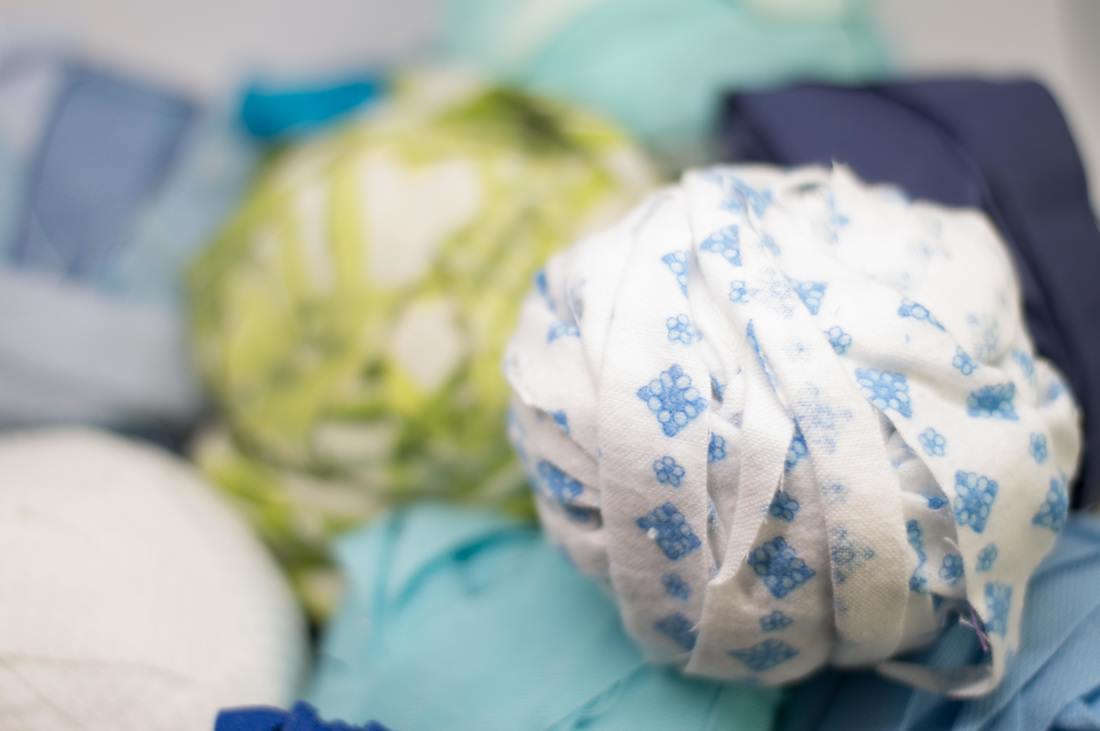|
One of my favorite Dolly Parton songs is “Coat of Many Colors,” a song about how her mother sewed her a coat from rags given to her family. She was proud of her coat because her mother made it with love. The final verse of the song goes: Now I know we had no money But I was rich as I could be In my coat of many colors My momma made for me It’s a true story, and the original coat is on display at Dollywood. There’s so much love and tenderness in the song, but what fascinates me right now are the rags. The topic of waste is an important one to Slow Fashion October, and it’s one I’ve been thinking about a lot. Maybe it’s because I just moved, and moving unearths all the junk that accumulates in a house over the years. The experience has me trying to be more mindful of what I purchase, and has me looking at waste in a different light. I tend to wear clothes until they’re totally worn out, and would never expect anyone else to want them once they reach that state. So if sending things to the thrift store isn’t such a viable option, what to do with the clothing waste I generate? There seems to be a certain amount of waste that Western culture has grown comfortable with. It’s so ingrained, most people don’t even think about what happens to their pile of rags when they drop them off at the thrift store or dump them in the garbage bin. The article No One Wants Your Old Clothes is worth a read – it describes what really happens to old clothes once we think we’re done with them. The bottom line is this: thrift stores can’t possible resell all the donations they receive. Tons of old clothes are shipped off to third world markets where they depress existing textile economies, and clothes that get thrown into landfill contribute to greenhouse gases and leach harmful chemicals into the soil. Not pretty. We talk a lot about the waste associated with clothing, but as a crafter, there’s another aspect of waste. It’s easy to pat myself on the back for my DIY spirit and the fact that the few handmade clothes I have didn’t come from a factory. Don’t get me wrong, I think that’s an important step towards wasting less, but even in these pursuits, there’s a lot of waste that’s generated. When I knit, even if I use up every yard of yarn, there are still ends to weave in and snip off. When I spin yarn, there are neps and vegetable matter to be pick out. Not to mention snarls of unusable yarn when things go wrong. When I sew, there are scraps of fabric left on the cutting room floor, seams to be trimmed, threads to be snipped off. When I weave, there is “loom waste” built into every calculation – yarn that is used to attach the weaving to the loom and that can not be woven. My maternal grandmother, who grew up in the Great Depression and taught home economics for twenty years, could often shave as much as half a yard off what the pattern called for. Experience and necessity had taught her the most economical ways to use fabric. But there was still plenty of waste. She’d often tuck away scraps with a wink, saying “this could make a nice pocket.” Yet there were no scrap pockets. She was a long way off from the flour sack dresses and coats of many colors of the Great Depression, and understandably wanted the nicest looking clothes she could make. And when she stopped sewing and it was time for her to downsize to a retirement community, there were boxes and boxes of hoarded scraps. There has to be another way, somewhere between throwing things away and hoarding them, which really is its own kind of waste. The textile industry certainly is aware of waste, and has been working to cut down on waste for hundreds of years. After all, wasted fabric is a wasted investment, so any efforts to reduce waste are worth the time and effort.
One thing I’m really interested in is how I can use my rags, scraps, and textile waste myself, before it gets sent off to the dump. The reality is that the amount of waste I produce could probably never get sent to a shoddy mill, and yet, it seems so wasteful to send it to the dump. I’m experimenting with rag rugs this year, but I’m also interested in other ways to reduce my textile waste. My weaving teacher told me that weavers often make their own chenille yarn, and I’m interested in trying that. And while watching a spinning video, I realized that wool unsuitable to become yarn is great for quilt batting. Of course. It’s all about perspective and valuing your materials, even when they can’t be used for the main purpose of your project. It’s an ongoing journey, to be sure, and not the easiest one, at that. But like so many things about slow fashion, I think it’s worth it. xx,
Pamela Comments are closed.
|
Archives
January 2024
Categories
All
This website uses marketing and tracking technologies. Opting out of this will opt you out of all cookies, except for those needed to run the website. Note that some products may not work as well without tracking cookies. Opt Out of Cookies |

 RSS Feed
RSS Feed